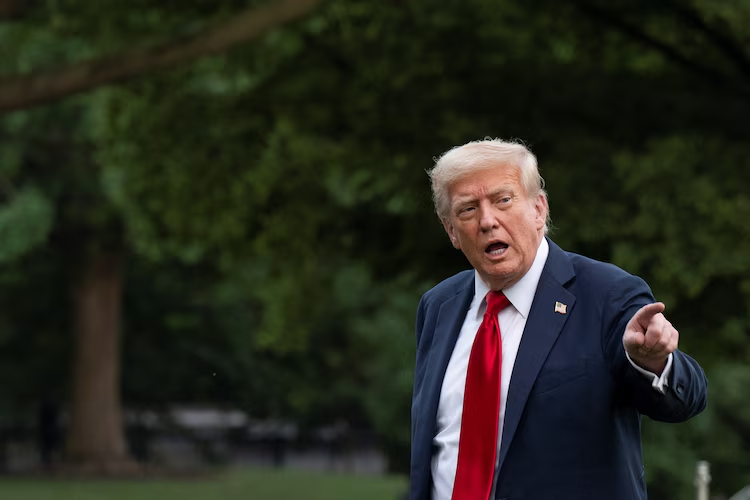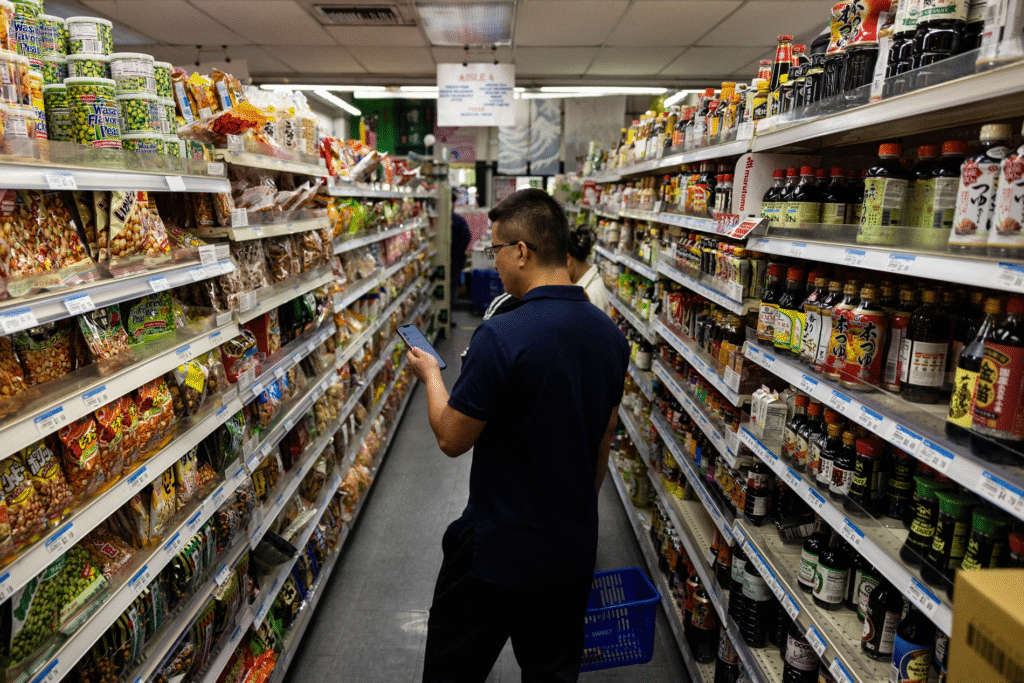A fresh report released on July 15, 2025, shows consumer prices rose 2.7% in June compared to a year ago. This marks two consecutive months of rising inflation, a shift from earlier trends.

Annabelle Gordon/Reuters
The increase aligns with President Donald Trump’s tariff policies taking effect. The Federal Reserve’s target of 2% inflation is now surpassed. Shoppers are feeling the impact as prices climb for everyday goods. Economists warn this could signal a broader trend.
Trump’s Tariffs Take Hold
President Trump’s tariffs, rolled out in early 2025, have driven up costs for imported goods. Items like clothing, coffee, and electronics are more expensive. Major retailers, including Walmart and Best Buy, warned they may pass tariff costs to consumers. Importers typically absorb part of the tax burden, but not all. As a result, shoppers are seeing higher prices at checkout.
The tariffs aim to boost U.S. manufacturing but are sparking inflation concerns.
Trump Claims ‘Inflation Is Dead’
On July 13, 2025, President Trump spoke to the press at the White House. “The economy is roaring, business confidence is soaring, incomes are up, prices are down, and inflation is dead,” he said.
He repeated, “It’s dead.” Despite his claims, inflation remains above the Federal Reserve’s 2% target. Data shows persistent price increases, contradicting Trump’s narrative. Analysts note his optimism may downplay the tariff-driven price surges. Some expect inflation to accelerate further.
Federal Reserve’s Response
The Federal Reserve has kept interest rates unchanged as inflation rises. Fed Chair Jerome Powell addressed tariffs’ impact at a recent event. He noted the Fed paused rate cuts due to tariff-driven price hikes. Last month, the Fed raised its inflation forecast from March projections. Policymakers are cautious, expecting tariffs to push prices higher.
The central bank is closely monitoring the situation. Rate cuts, once anticipated, are now delayed.
Retailers are warning of widespread price increases due to tariffs. A Joint Economic Committee analysis found cookout costs rose at a 12.7% annualized rate since Trump’s “Liberation Day” tariffs. Ground beef and ice cream hit their highest prices since the 1980s.
Shoppers in cities like Austin, Texas, noticed pricier goods in stores. From clothing to groceries, costs are up. Retailers say they have little choice but to pass on tariff costs.
President Donald Trump speaks to the press as he arrives at the White House in Washington, D.C., on July 13, 2025.
President Donald Trump speaks to the press as he arrives at the White House in Washington, D.C., on July 13, 2025.

Economists predict inflation may climb further in the coming months. Trump’s tariffs create uncertainty for businesses and consumers.
Some analysts warn of slower economic growth if prices continue rising. The U.S. deficit grew by $64 billion, adding to economic concerns. public frustration with rising costs. While Trump touts economic strength, the path forward is unclear. Tariffs may boost domestic industries but risk higher inflation. The Federal Reserve and markets are bracing for impact.
The interplay of tariffs, inflation, and policy leaves the economy at a crossroads. Trump’s bold claims contrast with rising prices, and the Federal Reserve remains cautious. Consumers and businesses alike face uncertainty as costs climb.

 Trump Vows to Protect Qatar After Hamas Strike
Trump Vows to Protect Qatar After Hamas Strike  Trump Launches Fiery Attack on U.N. in General Assembly
Trump Launches Fiery Attack on U.N. in General Assembly  Canadians Pull Back from U.S. Trips Amid Border Backlash
Canadians Pull Back from U.S. Trips Amid Border Backlash  US vetoes UN Security Council resolution on Gaza ceasefire
US vetoes UN Security Council resolution on Gaza ceasefire  Trump Leaves Britain After Historic UK State Visit
Trump Leaves Britain After Historic UK State Visit  South Korea-U.S. nuclear agreement revision gains consensus
South Korea-U.S. nuclear agreement revision gains consensus